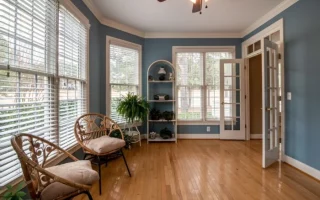Waterproofing involves multiple steps. Depending on your situation, you may also need to install a sump pump and a dehumidifier.
One of the most common reasons for wet basements is inadequate drainage. Gutters that don’t correctly direct rain and groundwater away from the home can cause flooding and seepage through the foundation.
Install a Vapor Barrier
To minimize the damage caused by water, one of the best steps you can take is a vapor barrier installation on your basement walls. This is an inexpensive way to protect your home from moisture and humidity. It can also help you save on energy costs.
Vapor barriers work by slowing the movement of water vapor from the warm side of the wall to the cold side, where it could condense and cause damage. The installation could be on both interior and exterior walls. When installing a vapor barrier, checking and sealing cracks in the basement walls and floor is essential. It would help if you filled any gaps around windows and doors. You can use caulking to do this.
If you have brick foundation walls, consider coating them with DRYLOK or another waterproof masonry coating. This will not only protect the brick from water vapor but it will also make the wall easier to clean and maintain.
You should also ensure that the soil around your home has adequate drainage and that any trees or shrubs in the yard are not causing too much moisture to build up. Excess moisture around your foundation can also cause it to leak or crack over time.
Install a Sump Pump
While interior basement sealants and waterproofing coatings can be effective in certain situations, they aren’t a solution when water infiltration is caused by hydrostatic pressure. When this pressure builds, the only way to remove the water is through a sump pump. A sump pump can remove the water before it causes any damage and prevent flooding and dampness, which is why this system is so important.
A sump pump is designed to be placed in a pit excavated beneath your basement floor. A liner is positioned in the pit to protect the pump from silt and debris. A check valve and a slope that grades away from the foundation are also part of the sump system to help keep it working correctly.
Besides keeping your home dry, a sump pump can increase your home’s value. It also helps prevent mold and mildew, both unsightly and can lead to health issues for your family.
It’s essential to test your sump pump once it’s installed. When it’s full of water, check the float arm to see if the pump is operating correctly. If the pump isn’t functioning, it may be time to replace it. The final step is to cover the sump pump with concrete to prevent exposure when heavy rains are expected.
Install a Drainage System
When NJ basement waterproofing is done correctly, it includes an internal drainage system. This will stop water from entering the basement walls and floor and prevent it from leaking through foundation cracks. The water can then be directed to a sump pump or down a slope leading away from the foundation. This helps to prevent sand and gravel from accumulating in the area, which can lead to erosion that causes foundation damage over time.
The drainage system should also include a pit dugout with high-quality plastic. This allows for a gravity drain to stop water from infiltrating basement walls. This is necessary for homes with soil conditions, enabling groundwater to build up and raise the water table. Waterproofing systems and drainage considerations are needed anytime a structure is built below ground level.
Waterproofing a basement will not only protect your home, but it will also add value to your property. A damp, musty basement can make a home look unattractive and be challenging to clean. This can cause a home to be less appealing to potential buyers and may even deter them from making an offer on your home.
Waterproofing your basement will reduce the number of floods that occur, and it can help you save money on restoring or replacing belongings damaged by moisture and flooding. It will also decrease the time you spend cleaning up after a flood, saving you valuable time and energy.
Install Insulation
A common misconception among homeowners is that waterproofing is like waterproofing a pair of boots—applying a coating that sheds water. However, that’s not the case when it comes to basements. Instead, waterproofing involves the elimination of moisture and dampness within a structure.
One of the biggest problems with basements is that they are cool, dark spaces filled with moisture—the perfect breeding ground for insects and mold. When left untreated, a basement can quickly become a health hazard, and a home’s value can decrease dramatically.
When it comes to basement waterproofing, many contractors focus only on the interior of a basement, but this is only part of the solution. For a basement to remain a safe and usable space, it must be insulated, and a dehumidifier should also be used.
Channels are cut into the foundation walls to insulate a basement, and then rigid foam insulation is installed. Choosing the right type of insulation is essential. While all three types of rigid foam insulation—polyisocyanurate, expanded polystyrene, and extruded polystyrene—perform well, green builders often prefer EPS because it is made with a blowing agent that doesn’t contribute to global warming.
Insulation also needs to be added between floor joists. This is usually done by cutting sections of rigid foam and adhering it to the band joist with spray foam adhesive. For the best results, when insulating a basement with spray foam, it is recommended to use a product such as Demilec’s Heatlok HFO, which uses a more environmentally friendly blowing agent.




